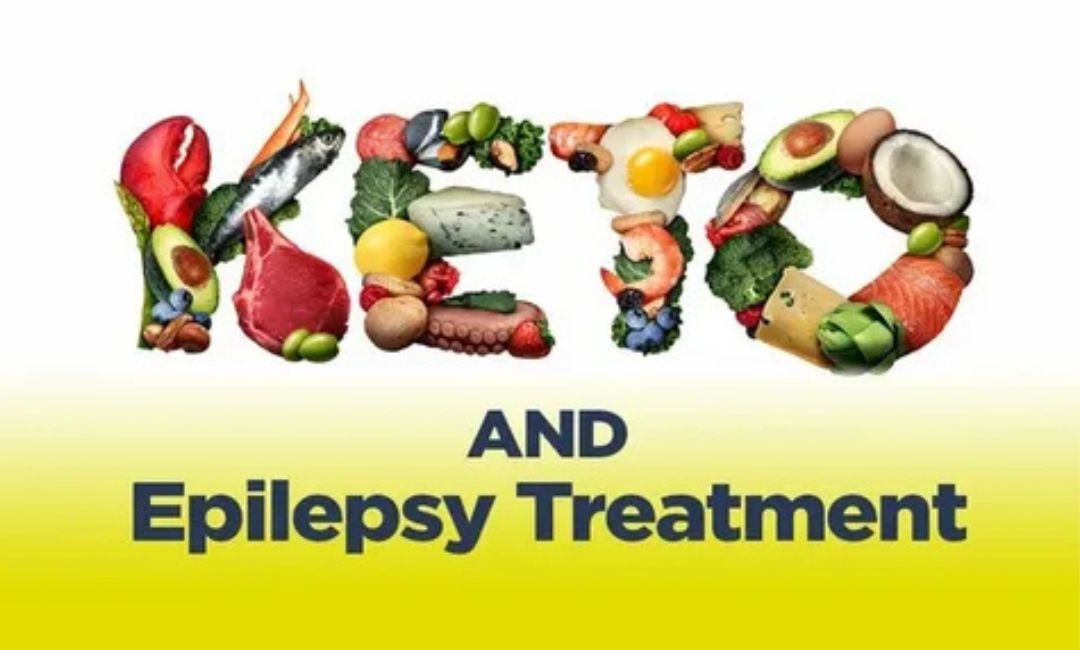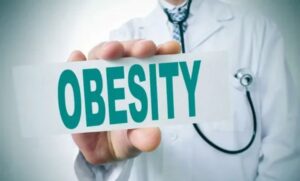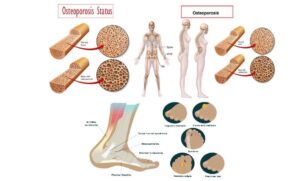Epilepsy is a condition in which people have recurring seizures. Although medications are helpful in controlling seizures for a huge number of people, about 30% still experience seizures. For people who still have seizures despite taking medicine for epilepsy, looking into dietary therapies and especially Keto Diet therapy is advisable.
The major goal of the keto diet is to put your body in ketosis by low carbs, moderate protein, and high-fat foods. Since ketone bodies are in higher amounts, they seem to keep the brain steady and decrease the episodes of seizures in this metabolic state. For more information and personalized advice on nutrition and healthy eating, visit the Nutrition & Healthy Eating section at Beargoal.
What is Epilepsy?
Epilepsy occurs when the brain activity is not normal, which results in seizures or unusual behaviors and sometimes makes people lose awareness. From a fleeting loss of attention to strong and prolonged seizures, this condition comes in all forms.
Common causes of epilepsy include:
- Genetic influence
- Brain trauma
- Stroke
- Infections (e.g., meningitis)
- Brain development disorders
When medications fail to control seizures, patients are classified as having drug-resistant epilepsy, making dietary interventions like the ketogenic diet more valuable.
What is the Ketogenic Diet?
The ketogenic diet is composed of:
- 70-80% fat
- 10-20% protein
- 5-10% carbohydrates
By restricting carbohydrate intake so much that the body changes from glucose for energy to ketones derived from fats, it shifts its metabolic process. This change in metabolism is thought to have a positive effect on electrical activity in the brain which may lead to reductions in seizure frequency.
Types of Ketogenic Diets for Epilepsy Management
There are some types of ketogenic diet which are given below:
| Diet Type | Key Features | Macronutrient Ratio | Best Suited For |
| Classic Ketogenic Diet | Very high fat, strictly calculated meals | 4:1 (Fat:Protein+Carb) | Children with severe epilepsy |
| Modified Atkins Diet (MAD) | Less restrictive, no calorie limits | Approx. 2:1 | Teens and adults |
| Medium-Chain Triglyceride (MCT) Diet | Uses MCT oil to allow more carbs and proteins | Flexible ratio | Patients needing more variety |
| Low Glycemic Index Treatment (LGIT) | Emphasizes low-GI carbs to stabilize blood sugar | ~60% fat, 30% protein, 10% low-GI carbs | Mild to moderate epilepsy |
Keto Diet in Epilepsy: Scientific Evidence
1. Historical Context
In the 1920s, the ketogenic diet was applied in treating those with epilepsy before other drugs for the brain were discovered. A large number of medical experts started using the diet after reporting that it was effective against epilepsy, especially for children who were not benefiting from available medicines. For personalized guidance on adopting a keto diet and its health benefits, schedule a free consultation with our nutrition experts.
2. Clinical Evidence
- By publishing in PMC, the review showed that on average, more than half of the children on the ketogenic diet got a reduction in seizures exceeding 50%.
- Johns Hopkins University reports that 10-15% of people on the keto diet for an extended time do not have seizures anymore.
- The Modified Atkins diet (MAD) is a slightly more liberal format of the ketogenic diet and is effective and easier with adults.
How Does the Keto Diet Help Epilepsy?
Several mechanisms explain why the keto diet may reduce seizures:
- Increased ketones: an alternative source of energy for the brain may stabilize nervous activity.
- Decreased glucose variability: lower blood sugar can diminish neuronal excitability.
- Improved mitochondrial function: increases energy use by brain cells.
- Anti-inflammatory effects: decreased oxidative stress aids in brain health.
Keto Diet Food Table for Epilepsy
Here’s a sample food list tailored for epilepsy patients on a ketogenic plan:
| Food Group | Allowed Foods | Avoid Foods |
| Fats & Oils | Olive oil, coconut oil, butter, ghee, MCT oil | Margarine,vegetable oils high in omega-6 |
| Proteins | Eggs, fatty fish (salmon), chicken thighs, cheese | Lean meats without fat, breaded meat |
| Vegetables | Spinach, kale, broccoli, zucchini, cauliflower | Potatoes,corn, peas, carrots (high-carb) |
| Dairy | Full-fat milk, heavy cream, Greek yogurt (unsweetened) | Skim milk, sweetened yogurt |
| Nuts
& Seeds |
Walnuts, almonds, flaxseeds, chia seeds | Peanuts with added sugar |
| Fruits | Avocados, berries (limited) | Bananas, apples, grapes |
| Beverages | Water, herbal tea, bone broth | Fruit juices, soft drinks, sweetened coffee/tea |
| Snacks | Cheese sticks, deviled eggs, avocado slices | Crackers, chips, granola bars |
Advantages and disadvantages of the keto diet for epilepsy
Advantages
- Reduces seizures
- It’s a non-drug option
- Increased awareness and cognitive function
- Less medication side effects
- Good option for drug resistant epilepsy
Disadvantages
- Can be difficult to maintain long-term use
- Risks include constipation, dehydration and kidney stones
- Requires medical and nutritional supervision.
- May hinder growth if applied in children
- Risk of nutrient deficiencies.
Epilepsy with Other Diseases (Comorbidities)
Common Comorbid Conditions with Epilepsy
| Comorbid Disease | Description & Impact | Relevance to Keto Diet |
| Depression & Anxiety | Up to 50% of people with epilepsy have mood disorders. | Keto may support mood stabilization through brain metabolism. |
| Autism Spectrum Disorder (ASD) | Often co-occurs with epilepsy, especially in children. | Some studies show keto improves both seizures and behavior. |
| Cerebral Palsy (CP) | A motor disorder where epilepsy is a common complication. | Careful dietary monitoring is needed; keto can still be effective. |
| Migraine | Shared neurological mechanisms link epilepsy and migraines. | Keto may help reduce both seizures and migraine frequency. |
| Stroke | Seizures can occur post-stroke due to brain damage. | Post-stroke patients may benefit from keto under supervision. |
| Sleep Disorders | Insomnia, sleep apnea, and poor sleep are common in epilepsy. | Keto may improve sleep quality via metabolic regulation. |
| Obesity & Metabolic Syndrome | Some epilepsy medications cause weight gain and insulin resistance. | Keto may help with weight control and insulin sensitivity. |
| Cognitive Impairment | Memory and attention issues are common, especially in childhood epilepsy. | Ketones may have neuroprotective effects. |
| Autoimmune Disorders | Conditions like lupus or multiple sclerosis sometimes co-occur with epilepsy. | The anti-inflammatory nature of keto may provide added benefits. |
Key Considerations When Epilepsy Coexists with Other Diseases
- A person taking antiepileptic pills may encounter problems if using depression, diabetic, or autoimmune medicine as well.
- There are different conditions that can increase the possibility of vitamin (D, magnesium) and mineral deficiencies.
- Someone with renal disease, diabetes or metabolic issues may require their keto plan to be customized.
- It is necessary to work in partnership with neurologists, dietitians, psychologists and other doctors.
Conclusion
The ketogenic diet has been found helpful for people with epilepsy, especially those who do not respond to various drugs. After almost 100 years of clinical research, the diet results in controlling or ending seizures for some people. Yet, it is essential to realize that the keto diet by itself does not cure things, so it needs to be managed with the assistance of a proper healthcare professional in proper conditions.
Dealing with epilepsy, whether you or a loved one, and medicine prescribed by traditional methods seems to be ineffective. Such problems may make you consider trying a change in diet. By following the keto diet, even with its strict rules, a person may be free from seizures. It is quite clear to me, the initiative pays off in the end. For more information and personalized advice on nutrition and healthy eating, visit the Nutrition & Healthy Eating section at Beargoal.






